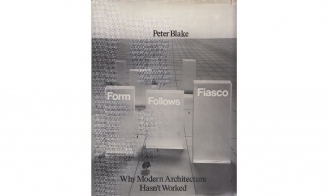Vaidas Petrulis - Architectural criticism in Lithuania: a historical perspective
beautiful/ugly
Architectural criticism can be understood broadly. It is a set of public opinion-forming opportunities. Initiatives of activism, artistic interpretations or spontaneous discourse on social media – all of these processes have the potential to influence public perceptions of architectural space. However, many claim that the classical text of architectural criticism is not a common phenomenon in Lithuania. We lack the diversity of publications, authors, attitudes ... Is this assumption correct? Can we say that architectural criticism in Lithuania is in decline? Or, on the contrary, is it transforming and does it manifest in other forms? To open the discussion on this topic, we will begin with historical observations. The lecture will compare the manifestations of architectural criticism in interwar, soviet and contemporary Lithuania.
The lecture will be held at MO museum (Pylimo g. 17, Vilnius). The start is at 20.00. The event is free.

Vaidas Petrulis is a historian of architecture, researcher of Lithuanian 20th century architecture, and works at the Institute of Architecture and Construction at the Kaunas University of Technology. Since 2009, he has developed a digital internet archive of architectural heritage (www.autc.lt). He is the co-author of the books Architektūra sovietinėje Lietuvoje [Architecture in Soviet Lithuania] (2012); Lietuvos tarpukario architektūrinis palikimas: materialumo ir nematerialumo dermė [Architectural Heritage of the Interwar Period in Lithuania: The Combination of Tangibility and Intangibility] (2015). In 2019, he published a book Paveldas kaip konfliktas: metodologinės Lietuvos XX a. architektūrinio palikimo vertinimo prielaidos [Heritage as a conflict: the shift between modernist and after-modernist concepts of heritage in Lithuania].

One of the fundamental assumptions for critical thinking about architecture is the questioning of established clichés. Although Peter Blake's book Form follows the fiasco has not become a widely read architectural classic, it is an excellent example of critical thinking. The book appeals to readers because of the author's idea that the slogan of modernism, form follows function, is merely a fantasy, as “much of the time, form is nothing more than an educated guess about function”. There is another inspiration for reading this book: I always try to combine my desire to look for recent literature with knowledge of historical texts on architecture.
